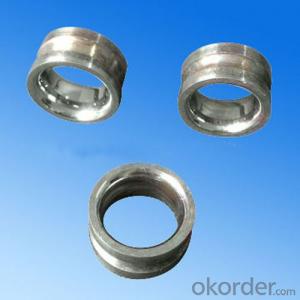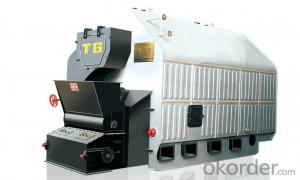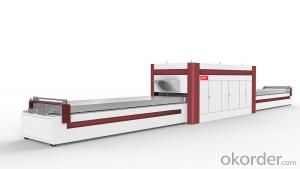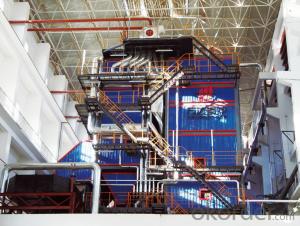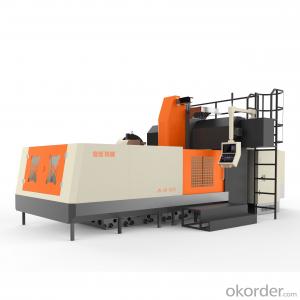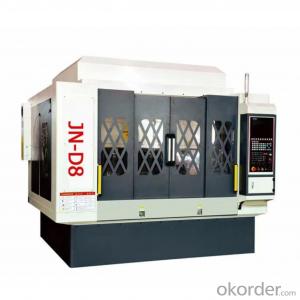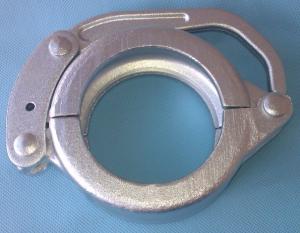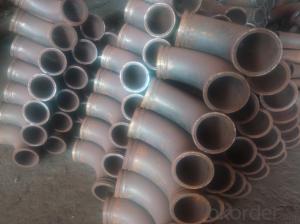Carbide Round Wire Guide for Textile Industry
- Loading Port:
- Shanghai
- Payment Terms:
- TT OR LC
- Min Order Qty:
- 1 pc
- Supply Capability:
- 1000 pc/month
OKorder Service Pledge
OKorder Financial Service
You Might Also Like
Description:
Made by high purity carbide raw material, good abrasive resistance.
After accurate grinding and polishing, the friction factor of surface is very low.
High-precision technical equipment
Applications:
The carbide balls are widely used in where extreme hardness and wear resistance is required, such as bearings, ball screws, valves and flow meters, pen, spraying machines, pump, machinery parts, oil, hydrochloric acid lab, hardness measuring instrument and more high-end industry
Diameters:
Dia. 2, 5, 7, 8, 10, 12mm (or 5/8, 3/4, 15/16, 1-1/8, 1-1/4, 1-3/8, 1-1/16, 2-1/4") and more.
Quick details:
Place of origin: Zhuzhou, China
Chemical composition: WC + cobalt
Surface color: blanks ungrounded of grinding polished
MOQ:
Can be 100 pieces or 1kg
But the price will be a little bit high when the quantity is below 50kg or 2000USD
Packing:
First in plastic bag, 1 bag/paper box, 20 boxes/ctn
According to customer's demand
Sample:
Samples are available upon customers' request
Sample lead time is 7 days
Sample sent by DHL,UPS,FEDEX, EMS, China Post Airmail and more
Delivery lead time:
For standard types, delivery lead time is normally 20-25 days.
For nonstandard type or further processed type, delivery lead time is 25-35 days
For urgent needs, delivery lead time may be pushed by negotiation
Payment methods:
T/T, 30% deposit, balance payment before shipment
Other payment methods such as PayPal, Western Union, L/C are negotiable
Other services:
OEM and ODM are welcome
Customized designs welcomed
Experienced staffs will reply to your inquiry within 24 working hours
Details:
Rade | Density | Hardness | T·R·S (MPa) | Application Recommended |
YG4C | 15.00 | 89.5 | 1800 | Mainly used as small buttons for percussion bits and as the inserts of rotary prospecting bits to cut soft, medium-hard formations |
YG8 | 15.8 | 89.5 | 1700 | Mainly used as the buttons of small and medium-sized percussion bits and as the inserts of rotary prospecting bits to cut soft, medium-hard formations |
YG8 | 14.7 | 88.5 | 2300 | Mainly used as the buttons of small and medium-sized percussion bits and as the inserts of rotary prospecting bits to cut soft, medium-hard formations |
YG8C | 14.7 | 88.0 | 2300 | Mainly used as the buttons of small and medium-sized percussion bits and as the inserts of rotary prospecting bits to cut soft, medium-hard formations |
YG9C | 14.5 | 87.0 | 2400 | Mainly used as the inserts and buttons for rotary-percussive bits, coal-cutting bits and tricone bits to cut medium-hard and hard formations |
YG11C | 14.4 | 86.5 | 2450 | Chiefly for the inserts and buttons of heavy rock drill bits and rotary-percussive bits, coal-cutting bits and tricone bits to cut medium-hard and hard formations |
YG13C | 14.3 | 86.0 | 2500 | Mainly used as the inserts and buttons of tricone bits rotary-percussive bits and heavy rock drill bits to cut medium-hard and hard formations |
YG15 | 14.00 | 86.5 | 2500 | It is stronger, and is mainly used as the inserts and buttons of rotary-percussive bits, heavy rock drill bits to cut hard and very hard formations |
YG16 | 14.10-14.30 | 87.5 | 2400 | It is mainly used for making cemented carbide substrate tips to be used in PDC cutters for excavating coal and oil field PDC bits |
YG20 | 13.40-13.70 | 85.0 | 2254 | Mainly for the stamping dies used in the conditions of heavy impact load and large strees |
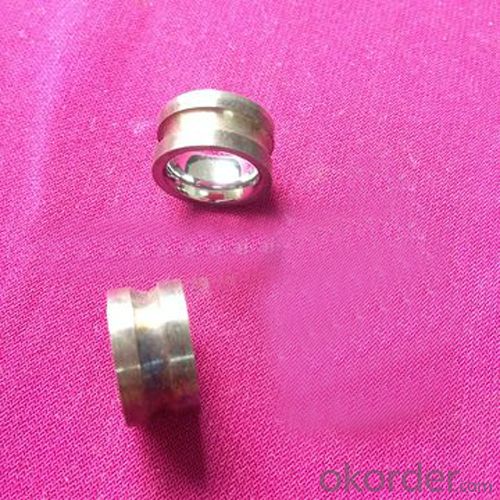
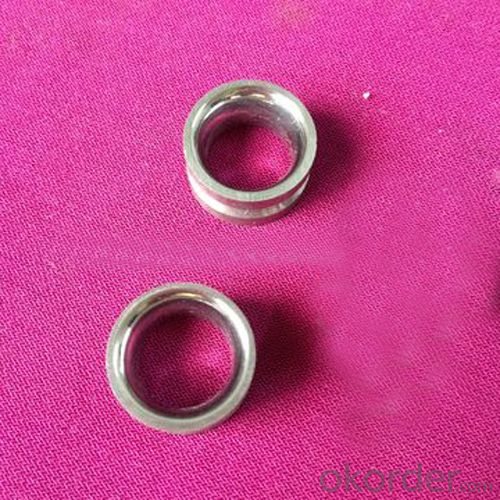
- Q:Can I repair concrete pump spare parts instead of replacing them?
- In certain instances, it is indeed possible to repair concrete pump spare parts instead of opting for replacement. There are various components of concrete pump spare parts, including seals, gaskets, valves, and hydraulic elements, that can be effectively repaired. However, the feasibility of repair is contingent upon the severity of the damage and the particular part in need of attention. In situations where the damaged parts are excessively worn or damaged, an effective repair may not be feasible, thus necessitating replacement. To ascertain whether repair is a practical option for your specific concrete pump spare parts, it is imperative to seek advice from a professional or reach out to the manufacturer.
- Q:How often should concrete pump remote control batteries be replaced?
- The replacement of concrete pump remote control batteries relies on several factors, including frequency of usage, battery quality, and environmental conditions. However, as a general rule, it is advisable to change the batteries every 6 to 12 months. This guarantees optimal functioning of the remote control and prevents unforeseen battery failures during crucial operations. Additionally, it is crucial to periodically assess battery performance and perform maintenance checks to ensure proper functionality.
- Q:How does a concrete pump hopper grate prevent clogs?
- Preventing clogs in the concrete pump system is a crucial function of the hopper grate. Acting as a filter, it permits only the necessary aggregate size to pass through, while capturing any excess debris or large particles that could cause blockages. Strategically placed openings or grids in the grate catch these unwanted materials. When pouring the concrete mixture into the hopper, the grate serves as a barrier. It allows only the appropriate material size to pass through, while obstructing any larger or undesirable debris. This ensures a smooth flow of concrete through the pump system, preventing any disruptions or jams during construction. Furthermore, the grate is typically constructed from durable materials like steel or high-density polyethylene. These materials are resistant to damage and wear, allowing the grate to withstand the high-pressure environment and continuous operation without deformation. Regular maintenance and cleaning of the hopper grate are also essential to prevent clogs. By inspecting and removing any accumulated debris or build-up on a regular basis, operators can ensure that the grate remains clear and fully functional, thereby preventing potential clogging issues. In conclusion, the concrete pump hopper grate acts as a filter to prevent clogs, allowing only the necessary aggregate size to pass through while capturing larger particles and debris. Its design and durable material ensure a smooth flow of concrete, minimizing the risk of blockages and maintaining construction efficiency.
- Q:Are there any specific tools or equipment required for the installation of concrete pump spare parts?
- Yes, there are specific tools and equipment required for the installation of concrete pump spare parts. Some of these tools include: 1. Wrenches and sockets: These are used to loosen and tighten bolts and nuts during the installation process. 2. Hydraulic jacks: Hydraulic jacks are necessary for lifting heavy parts of the concrete pump to provide easy access for installation. 3. Crane or hoist: In cases where the parts are extremely heavy, a crane or hoist may be required to lift and position them correctly. 4. Torque wrench: This tool is essential for tightening bolts to the correct torque specifications, ensuring a secure installation. 5. Grease gun: Lubrication is important for smooth operation of moving parts, so a grease gun is used to apply grease to specific components during installation. 6. Measuring tools: Measuring tapes or rulers are necessary to ensure accurate positioning and alignment of the spare parts. 7. Safety equipment: Safety goggles, gloves, and other protective gear should be worn during the installation process to prevent injuries. It is important to note that the specific tools and equipment required may vary depending on the type and complexity of the concrete pump and its spare parts. It is always recommended to consult the manufacturer's instructions or seek professional assistance to ensure proper installation.
- Q:How can a faulty battery affect the operation of the pump?
- A faulty battery can affect the operation of the pump by causing it to lose power or stop working altogether.
- Q:How can a malfunctioning control lever affect the pump's operation?
- A malfunctioning control lever can significantly impact the pump's operation. It may cause the pump to operate at incorrect speeds, resulting in inefficient performance or potential damage to the pump. Additionally, a malfunctioning control lever can lead to improper fluid flow control, leading to inconsistent or inaccurate output. Overall, it is crucial to promptly address any issues with the control lever to ensure the pump operates reliably and efficiently.
- Q:Are there any specific guidelines for the installation of seal kits or O-rings in concrete pump spare parts?
- Yes, there are specific guidelines for the installation of seal kits or O-rings in concrete pump spare parts. Here are some general guidelines to follow: 1. Safety precautions: Always ensure that the concrete pump is turned off and depressurized before attempting to install any seal kits or O-rings. Wear appropriate safety gear, such as gloves and goggles, to protect yourself during the installation process. 2. Preparation: Thoroughly clean the area where the seal kits or O-rings will be installed. Remove any debris or old seal remnants to ensure a clean and smooth surface for installation. 3. Inspection: Before installing new seal kits or O-rings, inspect them for any defects or damage. If any issues are found, replace the faulty parts with new ones. 4. Lubrication: Apply a small amount of compatible lubricant or hydraulic oil to the seal kits or O-rings to aid in their installation and prevent damage during the process. Be sure to use a lubricant that is compatible with the materials used in the seal kits or O-rings. 5. Proper alignment: Carefully align the seal kits or O-rings with their respective grooves or seating areas in the concrete pump. Ensure that they are properly seated and positioned before proceeding. 6. Correct installation technique: Use the appropriate tools and techniques to install the seal kits or O-rings. Avoid excessive force or bending, as this can lead to damage or improper sealing. 7. Testing: After the installation is complete, test the concrete pump to ensure that the seal kits or O-rings are functioning properly. Check for any leaks or abnormal behavior during operation. 8. Regular maintenance: Once the seal kits or O-rings are installed, it is important to regularly inspect and maintain them to ensure their longevity and optimal performance. Follow the manufacturer's recommended maintenance schedule and guidelines for best results. It is important to note that these guidelines are general in nature and may vary depending on the specific make and model of the concrete pump. Therefore, it is always recommended to consult the manufacturer's instructions and guidelines for the particular seal kits or O-rings being installed.
- Q:What are the signs of a malfunctioning gearbox?
- Some signs of a malfunctioning gearbox include grinding or whining noises coming from the transmission, difficulty in shifting gears, slipping gears, delayed engagement or disengagement of gears, and leaking transmission fluid.
- Q:What is the purpose of a concrete pump carbide wear plate?
- The purpose of a concrete pump carbide wear plate is to provide a durable and long-lasting surface for the concrete pump to transfer the concrete from the hopper to the desired location. Concrete pumps operate by using a piston system to push the concrete through the pump and into the delivery line. During this process, the wear plate serves as a protective barrier against the abrasive nature of the concrete. Concrete is a mixture of various materials, including sand, gravel, cement, and water. As it is pushed through the pump, the abrasive particles in the concrete can cause significant damage to the internal components of the pump, leading to decreased efficiency and increased maintenance costs. The carbide wear plate is specifically designed to withstand the high pressures and abrasive forces encountered during the concrete pumping process. Made from a strong and durable material called carbide, the wear plate provides a resistant surface that minimizes wear and tear on the pump's internal components. By using a concrete pump carbide wear plate, contractors and construction professionals can ensure that their concrete pumps operate efficiently and effectively, with minimal downtime for repairs. This not only saves time and money but also ensures that the concrete is delivered smoothly and consistently to the desired location, resulting in high-quality construction projects.
- Q:Are there any specific guidelines for the installation of hopper components or agitators in concrete pump spare parts?
- Concrete pump spare parts have specific guidelines for the installation of hopper components and agitators. These guidelines aim to ensure the equipment's proper functioning and safety. Here are some key guidelines to consider: 1. Manufacturer's instructions: Carefully read and understand the manufacturer's instructions for installing hopper components and agitators. These instructions provide specific details and steps for installation. 2. Use the right tools: Utilize appropriate tools and equipment as recommended by the manufacturer. This includes employing the correct size wrenches, bolts, and other necessary tools for the installation process. 3. Clean and level surface: Prior to installation, ensure the surface is both clean and level. This promotes proper alignment and functioning of the parts. 4. Check for damages or defects: Conduct a thorough inspection of the hopper components and agitators for any damages or defects prior to installation. If any issues are found, address them before proceeding with the installation. 5. Align and position correctly: Adhere to the manufacturer's recommendations for aligning and positioning the hopper components and agitators. Improper alignment may result in malfunctioning or premature wear of the parts. 6. Secure all connections: Ensure that all connections, such as bolts, nuts, and clamps, are securely fastened according to the manufacturer's instructions. Loose connections can lead to accidents or damage to the equipment. 7. Test the equipment: After installation, it is crucial to test the equipment to ensure proper functioning. Follow the manufacturer's guidelines for testing and make any necessary adjustments if required. 8. Regular maintenance and inspection: Once the hopper components and agitators are installed, it is vital to regularly inspect and maintain them. This includes cleaning, lubricating, and replacing any worn-out parts as recommended by the manufacturer. By adhering to these guidelines, you can ensure the correct installation of hopper components and agitators in concrete pump spare parts, promoting efficient operation and prolonging the equipment's lifespan.
1. Manufacturer Overview |
|
|---|---|
| Location | |
| Year Established | |
| Annual Output Value | |
| Main Markets | |
| Company Certifications | |
2. Manufacturer Certificates |
|
|---|---|
| a) Certification Name | |
| Range | |
| Reference | |
| Validity Period | |
3. Manufacturer Capability |
|
|---|---|
| a)Trade Capacity | |
| Nearest Port | |
| Export Percentage | |
| No.of Employees in Trade Department | |
| Language Spoken: | |
| b)Factory Information | |
| Factory Size: | |
| No. of Production Lines | |
| Contract Manufacturing | |
| Product Price Range | |
Send your message to us
Carbide Round Wire Guide for Textile Industry
- Loading Port:
- Shanghai
- Payment Terms:
- TT OR LC
- Min Order Qty:
- 1 pc
- Supply Capability:
- 1000 pc/month
OKorder Service Pledge
OKorder Financial Service
Similar products
New products
Hot products
Related keywords
